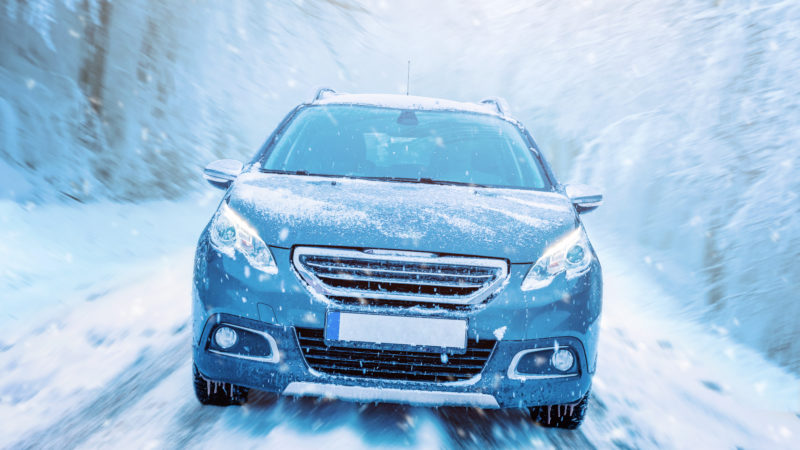
It’s no secret that Colorado can get hit with some pretty severe winter weather. In addition to plummeting temperatures and hazardous roadways, winter can also take a toll on your vehicle. All of that sleet, snow, and ice can wreak havoc on your automotive paint.
In addition to a good set of snow tires, you might also want to consider getting paint protection film (PPF) installed to get your car winter-ready.
But is PPF worth the investment in the wintertime? How does it hold up to freezing temperatures, ice, and snow?
Here is everything you need to know about winter and paint protection film.
Can PPF Hold Up to Winter Driving?
Paint protection film, or a clear bra, handles winter driving like a champ. This flexible, thin, and completely transparent layer of urethane is incredibly resilient and strong. As such, it can stand its ground while you’re driving through snow, sleet, and freezing rain.
Best of all, PPF was intended to protect your auto paint from corrosive agents, including bird bombs, acid rain, and road salt. This means that paint protection film is specifically engineered to combat winter weather, wrapping your car in a superior bubble of protection.
How Winter Affects Your Car Paint
Winter weather is one of your car paint’s worst enemies. Some of the ways cold, harsh weather can negatively affect your paint include:
- May cause cracking, chipping, bubbling, or peeling
- Hail storms can leave small dings and dents in your car if it’s parked out in the open
- Consistent exposure to road salt can erode thinner areas of the paint and corrode the body underneath
- Condensation caused by moving your car from the cold outdoors into a heated garage can alter the paint’s adhesiveness
To protect your vehicle all winter long, installing paint protection film is the way to go.
Prepare Your Car for Winter with Paint Protection Film
Whether your car is brand new or 10 years old, PPF will keep its paint in pristine condition. As we mentioned earlier, paint protection film keeps corrosive elements at bay. Additionally, it can safeguard your car from small dings caused by hail, swirl marks, and light scratches.
PPF’s heat-activated self-healing properties allow it to “heal” surface-level scratches and swirl marks. This keeps your ride looking flawless all year long.
4 Benefits of PPF in the Winter
Four of the biggest benefits of installing PPF in the winter include:
1. Protects Your Paint from Road Debris
Frigid temperatures can wear away a road’s asphalt, creating tons of loose gravel that can scratch your car. Installing paint protection film can protect your paint from scratches caused by road debris.
2. Superior Salt Protection
One of the biggest issues cars face in the winter is de-icing salt used on the roadways. PPF will shield your paint from sand and salt.
3. An Extra Layer of Protection from Extreme Temperatures
In Colorado, it’s not uncommon for the weather to plunge to sub-zero temperatures. This can cause your car’s finish to become brittle. Installing paint protection film provides a layer of flexible insulation that locks your paint in place.
4. Long-Lasting
PPF was made to go the distance. Most clear bras can last for up to 10 years. This means you can enjoy powerful protection for many winters to come.
Protect Your Car Paint This Winter
Want to protect your car paint this winter and all year long? If so, PPF could be a great solution for you. Red Rocks Tint provides quality clear bra services. We’re proud to use XPEL PPF in our shop. This leading paint protection film offers unmatched protection from the outside elements.
To learn more, contact us today by calling 303-261-7384. We’ll help you preserve your paint for years to come!
- Colorado Window Tint Laws 2023: Your Comprehensive Guide to State Regulations - August 22, 2023
- Top 5 Reasons to Get Paint Protection Film on Your Tesla - July 10, 2023
- How to Choose the Right Window Tint Shade for Your Car - July 10, 2023
